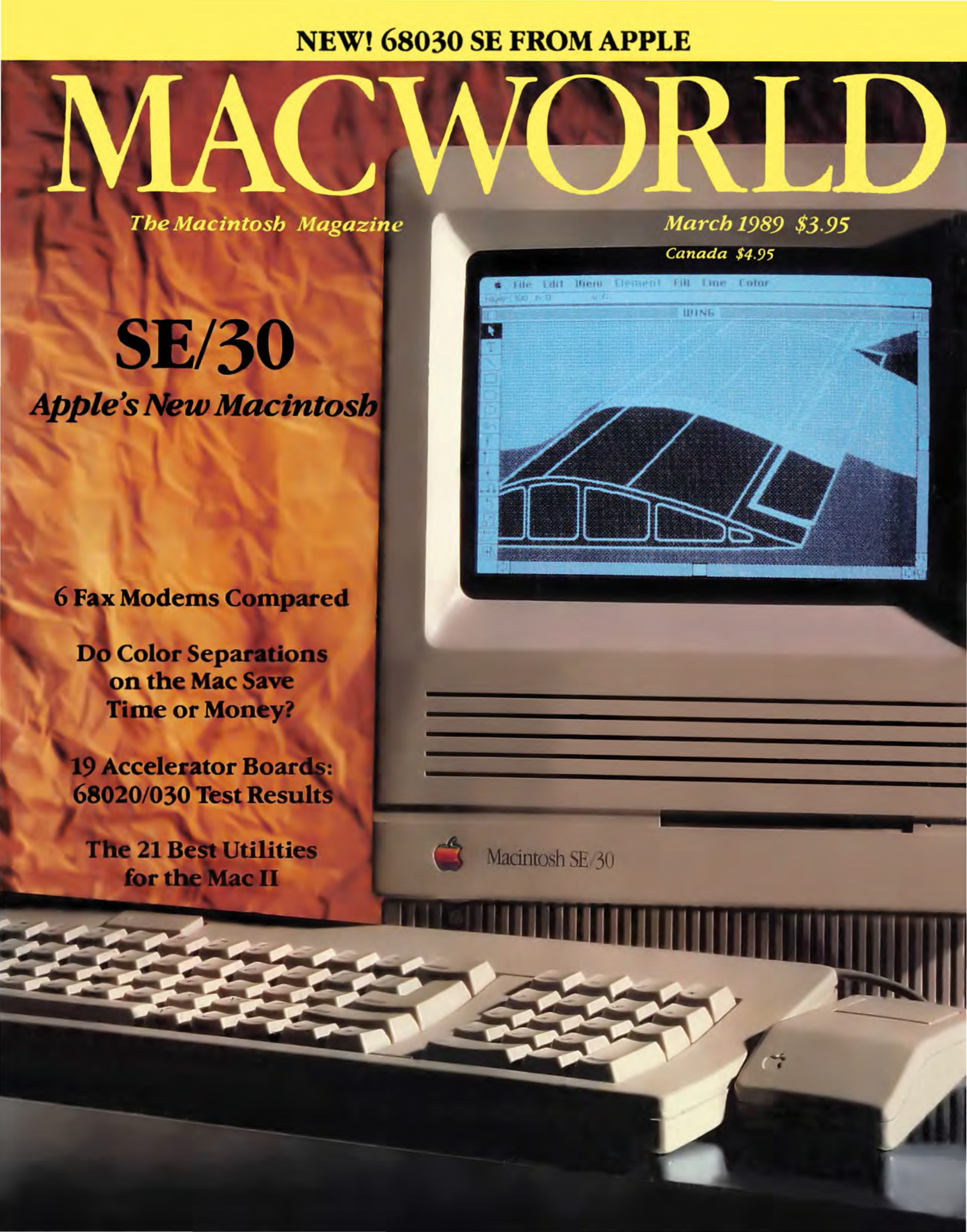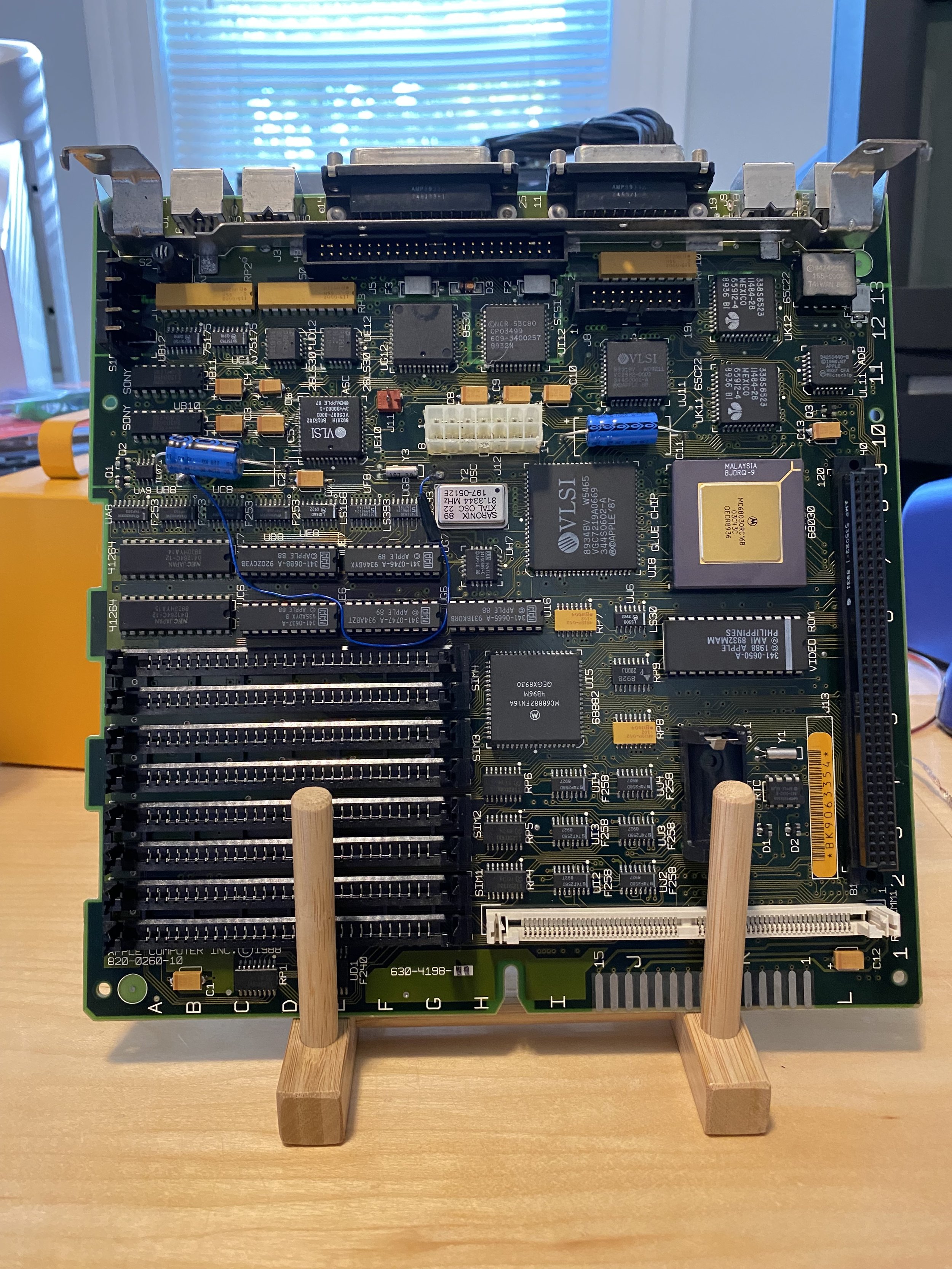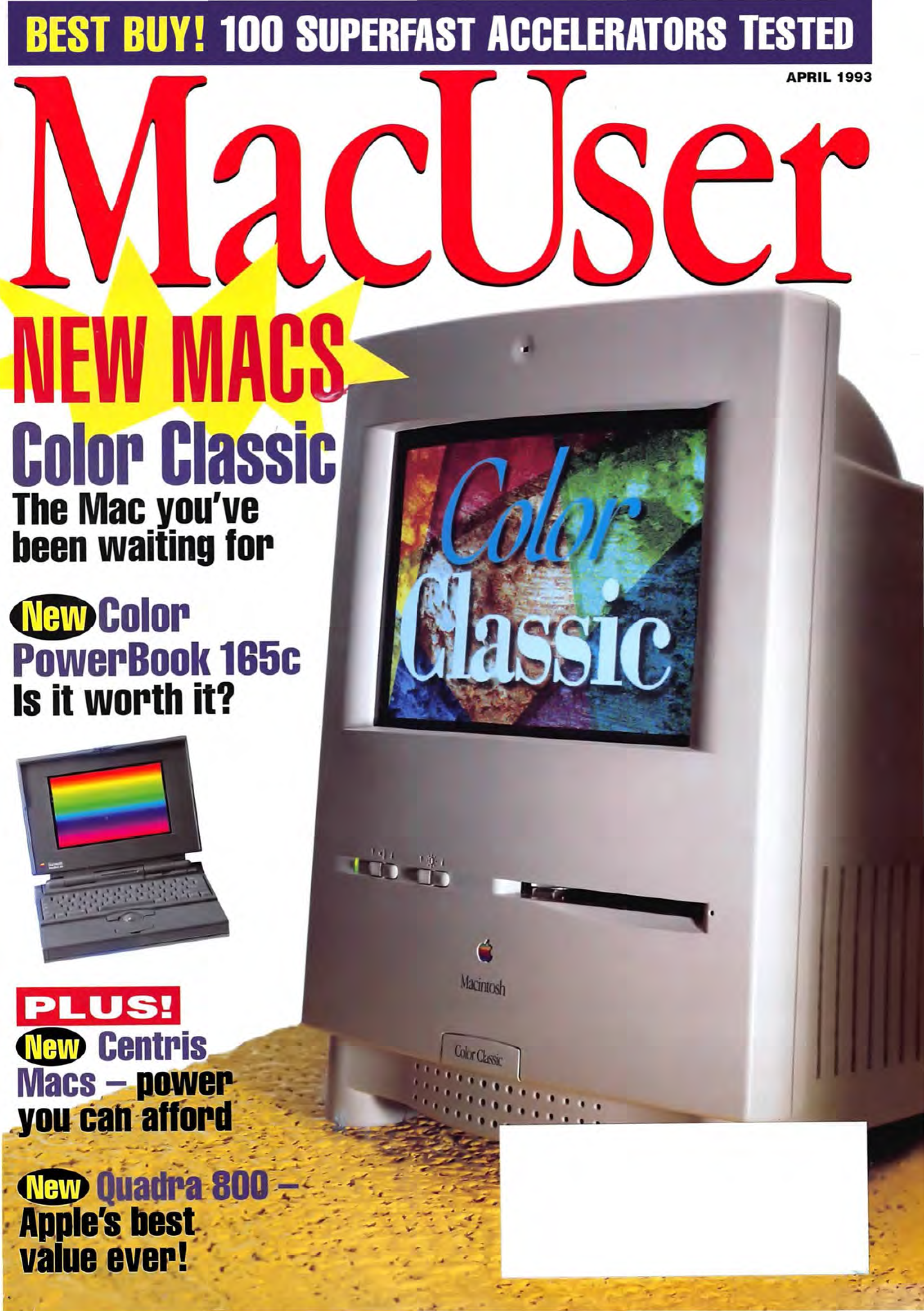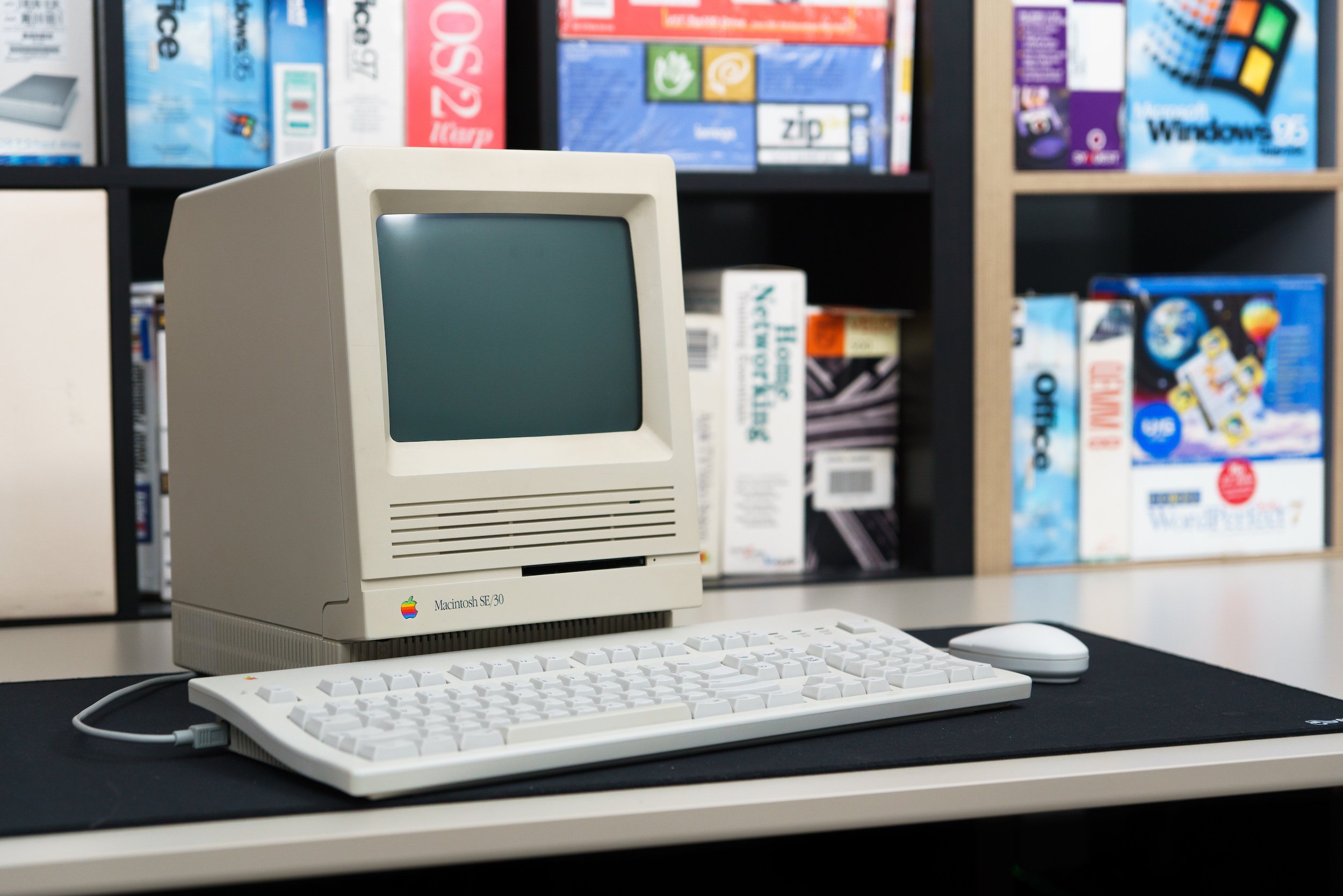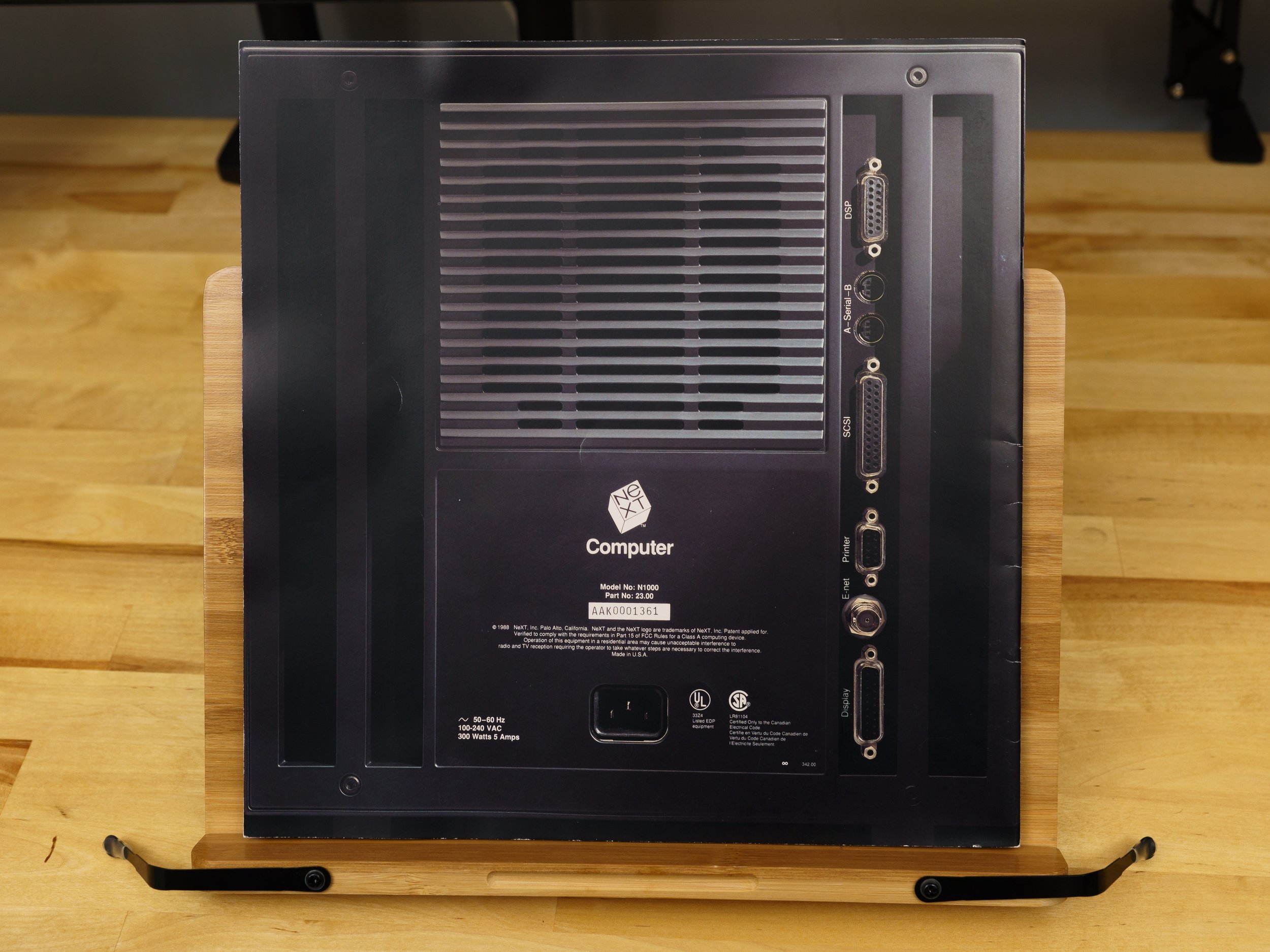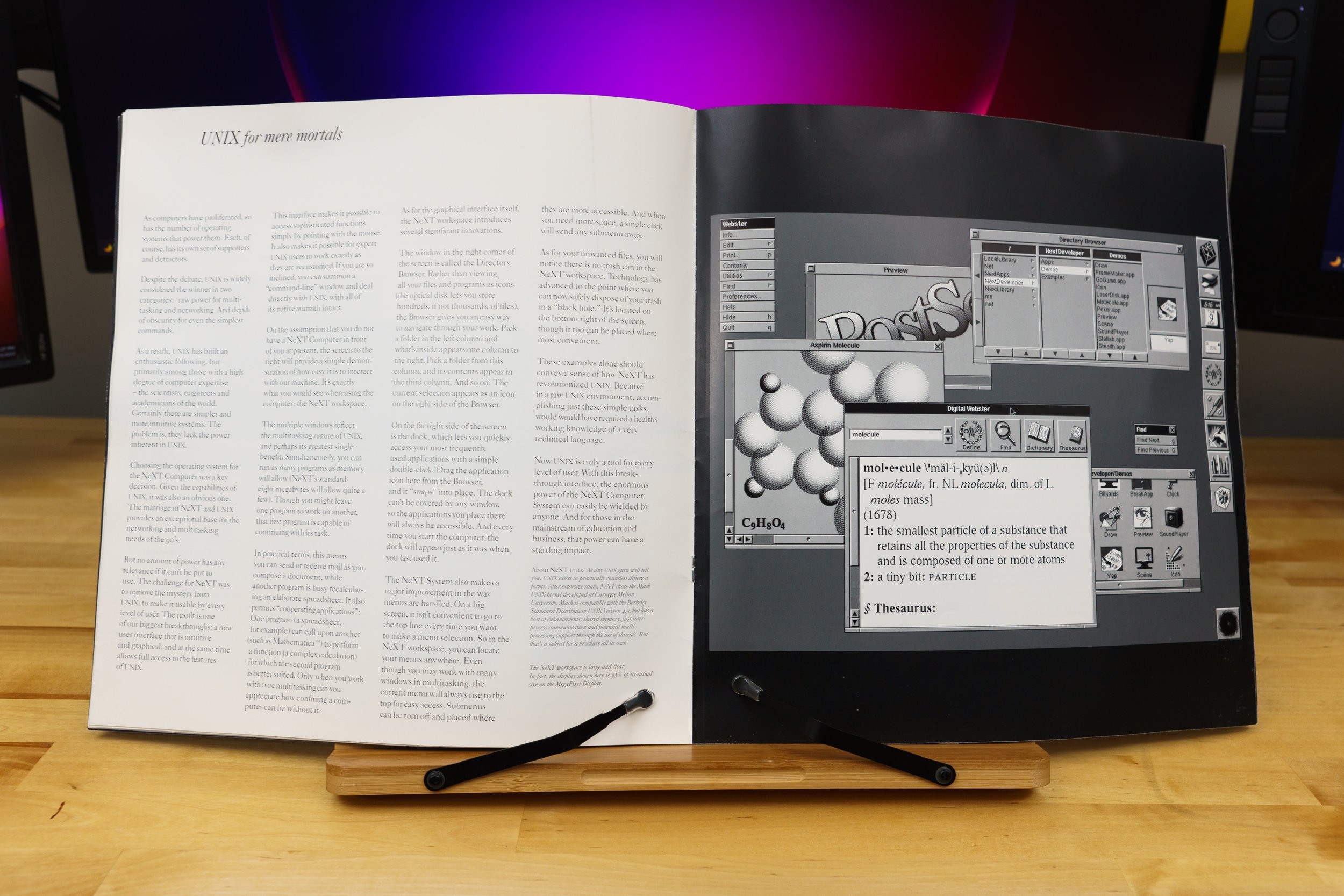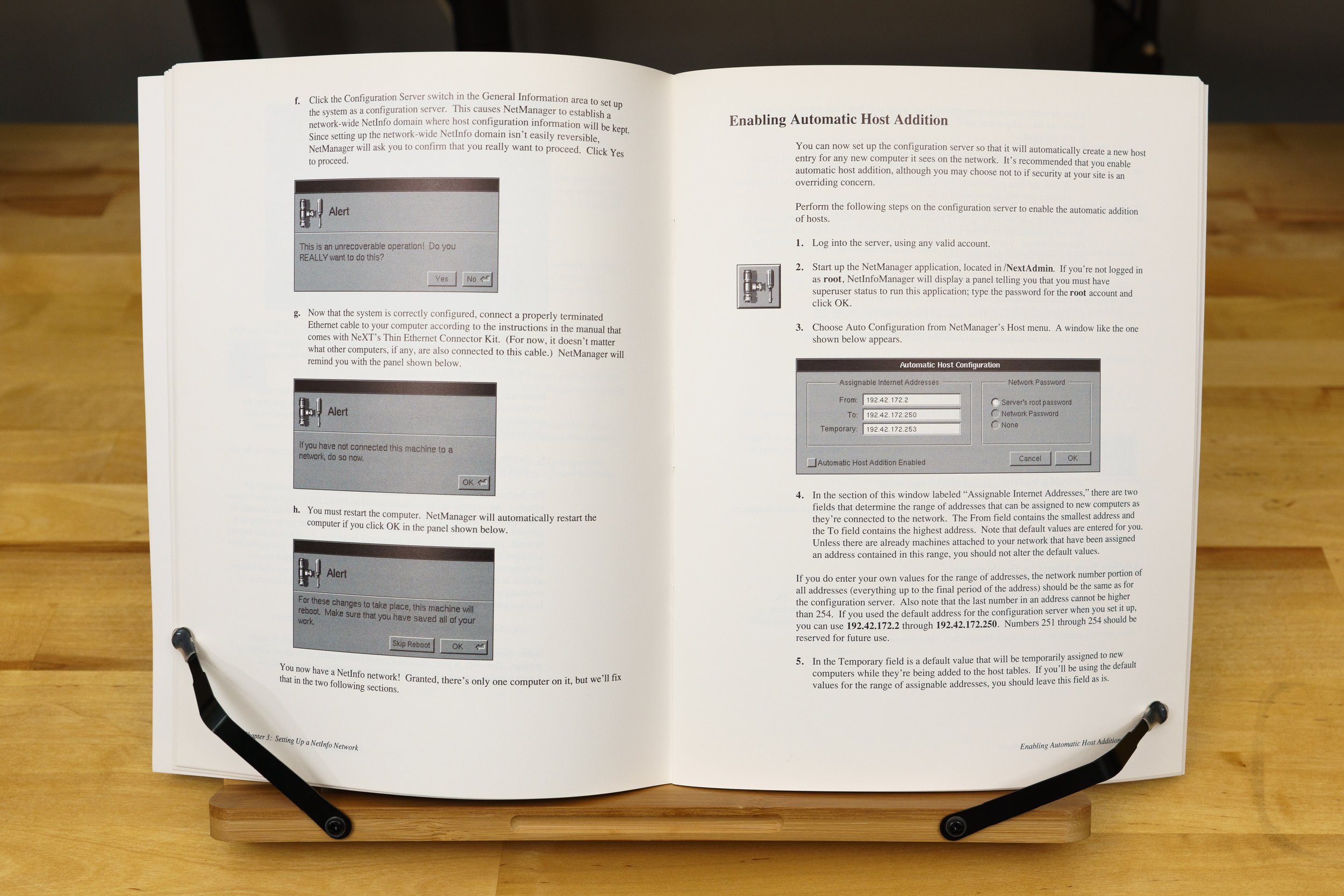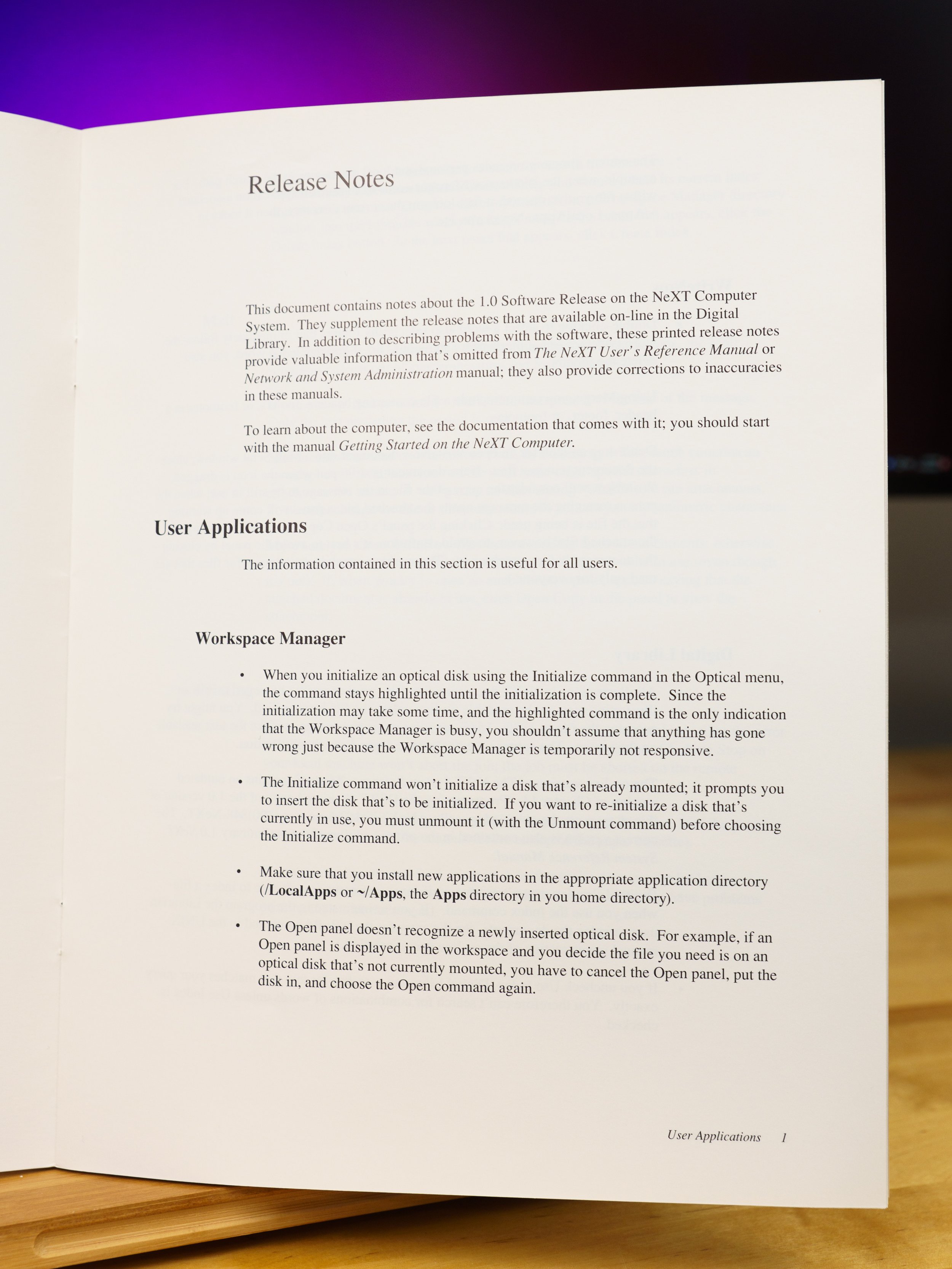IBM PS/2 Model 30 286 - Computers of Significant History
The slide rules, the jacquard looms, the abacus—when did you first get into collecting retro tech? We might not be going back as far as Herman Hollerith and his punchcards, but we will take a look at his great-great-grandputer. How are we gonna do it? Here in Userlandia, we’re gonna PS/2 it.
Welcome back to Computers of Significant History for another personal chapter in my personal chronology of personal computing. After examining the role of the Commodore 64 and Apple IIe in my life and yours, I’d be remiss in not addressing the big blue elephant in the room. The influence of International Business Machines could be felt everywhere before, during, and after the PC revolution. “Nobody ever got fired for buying IBM” as the old saying goes, and many people's first exposure to computers was an IBM PC being plopped onto their desk.
You might recall from a previous Computers of Significant History that a Commodore 64 was my primary home computer until October 1997 when my uncle gave me his Compaq ProLinea 486. That’s technically correct, which as you know is the best kind of correct. But that's not the whole story, because there was another computer evicted from the house that fateful October evening. Tossed out the door with the C64 was an IBM PS/2 Model 30 286 that I had acquired just six months earlier in April. As a fellow collector of old tech, you might feel bad for those computers now—but they had no feelings. And the new one was much better. Clearly I hadn't learned anything from watching The Brave Little Toaster as a kid.
That's right, my very first IBM compatible PC, the one I left out in the cold on that windy October evening, was a genuine IBM. It came with a matching color VGA monitor, a modem, a Microsoft Mouse, and a Model M meyboard-er, keyboard. With 2 MB of RAM and a 20 MB hard drive, it met the minimum requirements to run Windows 3.1, though the experience felt less like running and more like walking. Still, it could run Windows! And I so desperately wanted a machine that could run Windows, even though I couldn’t do much more than play Solitaire or type something in Windows Write.
So in an effort to bring you that same experience, I found one on eBay for a sensible price. With 1MB of RAM and a 30MB hard drive, this config would’ve retailed for $1,895 in 1989 (which is about $4700 in today's dollars). It also came with a Digiboard multiport serial card which apparently connects to a semiconductor validation machine! That's for inspecting silicon wafers for defects at chip foundries. Neat! For a computer that’s apparently lived a life of industrial servitude it wasn’t terribly dirty inside or out when it arrived. And the floppy and hard drives still work, which is impressive given their reputation for quitting without notice.
If the drives were dead, replacing them would be challenging. IBM said that the PS in PS/2 stood for Personal System, but I wouldn’t be alone in saying that “Proprietary System” would be more accurate. Not Invented Here is a powerful drug, and IBM was high on its own supply. The PS/2 series is the classic work of an addict. You might be familiar with the most famous symptom: Micro Channel Architecture, IBM’s advanced expansion bus with features like plug and play (sort of) and 32-bit data widths (sometimes). But look inside a Model 30 and you’ll see no Micro Channel slots at all. There’s three 16-bit AT bus slots, which you know better as the Industry Standard Architecture. Omitting the patented protocol had a practical purpose; the entry level models needed lower costs to maximize margins and ISA was cheaper.
But everything else inside these boxes was just as proprietary as its more expensive siblings. Need more memory? You can’t use ordinary 30 pin SIMMs; you needed IBM branded SIMMs with specific pinouts for the PS/2. Floppy drive gone bad? Its power and data connections are combined into one cable with a completely different pinout than a standard drive. The hard drive is proprietary too—it uses a special edge connector and its custom ST506 controller is unique to these low-end PS/2s. Even the power supply had to be special, with this wacky lever for the power switch and a connector that’s completely different from an AT.
Thirty years on, upgrading and repairing these PS/2s is more complicated than other PCs. PS/2 compatible SIMMs command a premium on the used market, though handy hackers can rewire some traces on standard modules to make them work. If your floppy drive can’t be repaired, you’ll need an adapter to use a common one, and you’ll need to 3D print a bracket to mount it. Unless you stick to specific IBM-branded hard disks you’ll need to sacrifice one of your slots for a disk controller or XT-IDE adapter.
And this doesn’t stop with hardware. IBM rewrote its BIOS for the PS/2, so a machine like the Model 30 286 that walks and talks like an AT isn’t actually an AT and shouldn’t be treated as such. The PC AT included a Setup floppy to configure its BIOS settings, and the PS/2 retooled this concept into Reference Disks for Micro Channel models and Starter Disks for ISA models. We gripe about setup disks today, but firmware storage back then was pretty limited and a setup program took up too much space on a ROM or flash chip.
Since the 35 year old battery inside the PS/2’s Dallas clock chip had expired, I needed to replace it. Instead of dremeling out the epoxy and soldering in a new battery, I bought a replacement chip with a removable battery. Next step: the starter disk dance. This was no problem thanks to disk images from the Ardent Tool of Capitalism website. I imaged a floppy on my modern PC, popped it into the PS/2, and booted into IBM’s system setup utility. BIOS configuration is pretty painless for a machine of that era—all I needed to do was set the time. And, credit where it's due, it didn't even complain about Y2K. There’s even a system tutorial on the starter disk, which is surprisingly friendly.
Doing this setup routine reminded me of the last time I ran the starter disk. My original PS/2 came my way thanks to the generosity of one of my middle school teachers. In the spring of ’97 I was a fourteen year old seventh grader who’d earned a reputation as a computer whisperer. This was before formal district IT departments had taken over the management of my middle school’s tech stack, and computer labs were more like fiefdoms of the individual teachers who ran them. If a regular classroom had a computer, that was yet another responsibility thrust upon our overworked and underpaid educators. Precocious kids who spent too much time reading computer books could be tapped to solve pesky computer problems.
Seventh grade was also when students were introduced to their first technology classes. “Technology” was a catch-all term for classes about applied engineering. One day you could be building a balsa wood bridge and testing its weight load, while the next day you could be drawing blueprints in computer aided design software. Mr. Reardon’s computer lab was full of the early nineties PC clones that we’re all trying to recollect today. A motley collection of 386, 486, and Pentium PCs, this local area network introduced me to the magic of AutoCAD.
Across the hall was Mr. Nerrie’s shop. Kids today would call it a “maker space,” what with the fabrication machinery. There were plenty of computers mixed in amongst the lathes and saws: an old Mac Classic, a no-name 386, and a PS/2 Model 30 286. They ran software like circuit building programs, wind tunnel simulators, and bridge construction games. Though the PS/2 wasn’t a speedy machine it eventually told me all the flaws in my designs. Mr. Nerrie had picked up on my affinity for computers, and encouraged me to try board-level repairs. My only experience with building electronics was one of those Radio Shack circuit builder kits, so learning how to use a soldering iron helped me level up my hardware skills.
One morning in April I noticed the PS/2 had vanished from its desk. In its place was a 486 tower that had migrated from Mr. Reardon’s lab. Now the PS/2 was sitting near the outside door alongside a box of accessories.
I asked what had happened to the PS/2, and Mr. Nerrie said that it was destined for the dumpster. Then the gears started turning in my head. “Well, if they’re just throwing it away… can I take it?” After a short pause, he said “Sure, why not. It’s better off being used than in the scrap pile.” I hooked it up to some nearby peripherals and started with the starter disk. After setting up the BIOS, I formatted the hard drive and installed a fresh copy of MS-DOS and Windows 3.1. With a wink and a nod to cover this misappropriation of school property, I could give this machine a second life. Getting it home was a chore—thanks for picking me up, mom. After setting it up in my bedroom, I stared at the DOS prompt. Now that I had this PC, what was I going to do with it?
Baud to the Bone
A PS/2 Model 30 286 wasn’t exactly a barn burner when it was new, and by the time I got one in 1997 it was laughably obsolete. That was the year of the Pentium II and 3dfx Voodoo breaking boundaries in 3D gaming. The only thing more absurd than using a 286 every day in 1997 would be… well, using a C64 every day in 1997. But when you’re lost in an 8-bit desert, any 16-bit machine feels like a refreshing glass of water.
Compared to my Commodore, the PS/2 had some significant advantages. Its 10MHz 286 CPU wasn’t a Pentium, but it was far more capable at crunching numbers than a 6510. 2 MB of RAM dwarfed the 64K that gave the C64 its name. VGA graphics with 256K of video memory gave glorious 256 color video, which was sixteen times the 64’s sixteen colors. 1.4MB floppies had nearly ten times the storage of a 170K CBM disk. The cherry on top was the 20MB hard drive, which wasn’t much but was still better than the C64’s nothing. The only advantage the C64 had was its SID sound chip which blew the PS/2’s piezoelectric PC speaker away, Memorex style.
Sadly, this machine wasn’t meant for games. The true second wave of DOS PC gaming relied on the combined power of a 386 CPU, SoundBlaster digital audio, and VGA graphics. Even if I added a sound card to the PS/2’s VGA graphics, I would still be missing the third piece of the PC gaming triforce. At least the PS/2 could manage some rounds of SimCity Classic or Wolfenstein 3D. That was fine by me because game consoles filled in the gap. We still had our collection of regular and Super Nintendo games, and my older brother had recently bought a PlayStation thanks to money he earned from his job at Stop and Shop.
The PS/2 might have lacked gaming prowess, but it could do something that my games consoles and C64 couldn’t: connect to the outside world. Included in the accessories box was a 1200 baud Hayes Smartmodem. Before you “well, actually” me, I know that my Commodore could dial into a BBS. There were plenty of C64 BBSes back in the eighties. But our C64 didn’t have a modem and by the time I was old enough to dial in—well, there may have been some Commodore boards left, but I certainly couldn't find them. PC BBSes, though—there were plenty of those.
Being a terminally online teen was harder in 1997. If I wanted to surf the Information Superhighway, I had to do it after school in the computer lab. Even if I could have afforded an ISP’s monthly service costs, a 286 PS/2 couldn’t run a graphical web browser. Bulletin boards were text based and thus had much lower system requirements. And they were free, so even a broke teen like me could use them. But there were strings attached. Because most boards had only one or two phone lines, every user had a connection time limit. After using your hour of credit you were done for the day. The same went for file transfers—if you wanted to download a file you needed to upload something in return lest you be branded a leech. And the Sysop who’s actually footing the bill can ban anyone at any time for any reason.
Armed with a copy of Telix I downloaded at school and a notepad of numbers from my buddy Scott, I was ready to dial in to my first bulletin board. He recommended The Maze, so I keyed in the number: 413-684-… well, I won’t say the last four digits. After some squawking and buzzing noises from the modem the PS/2 successfully connected to this magical world. I sat and watched as a logo crafted from ASCII text slowly painted line by line across the VGA monitor. 1200 bits per second was excruciating; I was used to my middle school’s blazing fast 128 kilobit frame relay connection. After this interminable wait, I was presented with a login prompt.
I had to register an account to gain access. This meant writing an introductory post to the sysop and creating a handle. Introducing myself was easy enough because Scott was already a Maze member and he could vouch for me. But a handle, that was more difficult. Bandit or Rubber Duck were too obvious. Then it struck me: I could use a character name from a video game. Even though I was hooked on the PlayStation at the time, I still had a soft spot for the Super Nintendo. Final Fantasy was one of my favorite video game series and it was full of memorable characters. It was settled: Kefka would be my handle.
After I filled out the registration form, the board said to check in the next day to see if my account was approved. After a seemingly endless day of school, I raced home to dial in and see if my request had been granted. I powered on the PS/2, launched Telix, and mashed number one in the phone book. After waiting an eternity for the logo to draw line by line, I typed in my user name and password—and it worked! The main menu slowly painted in its options: file downloads, message boards, something called doors—was the owner a Jim Morrison fan? Navigating the board took ages because of the modem’s narrow 120 character per second pipe. In hindsight it was probably a bad idea for a 14 year old kid—even a smart and precocious one like me—to be in an environment like this. The average user of The Maze was a college or late high school student with interests to match. I was a stupid newbie which meant I made a bunch of mistakes. Shep—the sysop—was a friendly enough guy who gave me some firm lessons in board etiquette, like “don’t drop carrier” and “don’t ping the sysop for a chat every time you log in.” I learned quickly enough to avoid being branded a lamer.
But while I never got into trouble online, my bulletin board adventures managed to get me into some trouble offline. Thankfully not the legal kind, as no teenage boy would ever try to download warez or inappropriate material. No, I made the most common mistake for a computer-loving kid: costing your parents money. One day I came home from school to find my mother angrily waving a phone bill in my face. My parents begrudgingly tolerated my modem usage as long as it was early in the morning or late in the evening when we weren’t expecting phone calls. However, there was one rule I literally couldn’t afford to break: no long distance calls.
Massachusetts’ 413 area code spans a lot of area from Worcester county all the way to the New York state border. You could incur toll charges calling within your own area code, and NYNEX offered a Dial-Around plan for those who wanted a consistent bill instead of surprise charges. But most people were like my parents—they didn’t make enough toll calls to justify its price and took their chances on metered billing instead. NYNEX and the other baby Bells published a list of exchanges that were within your local dialing area. Pittsfield’s list felt arbitrary—one number fifteen miles away in Adams was free, while another number eight miles away in Lee was a toll call. So I checked every board’s number to make sure I wouldn’t rack up a bill.
My cunning scheme was undone by the fact that NYNEX would occasionally break apart exchanges and shift around which ones were in your toll-free region. These weren't unannounced, but I was fourteen and I didn't read the phone bill. One local BBS number turned into a long distance call overnight, and I wasn’t checking the toll status after marking local numbers. Unbeknownst to me I was racking up toll charges left and right. My free computer and free bulletin boards wound up costing me eighty dollars, and I had to pay back every penny to the bank of mom and dad.
Most of my memories of the summer of 1997 revolve around the PS/2 and the hours I spent dialing in to various bulletin boards. Another teacher lending me a faster modem certainly helped. Mrs. Pughn, who ran the Mac lab, lent me a US Robotics Sportster 9600 modem to use over the break. This was a far more usable experience than my 1200 bit slowpoke. Menu screens painted almost instantly. I could download a whole day’s worth of message board posts for offline reading in two minutes instead of fifteen. That saved valuable time credits that could be spent playing door games instead.
Every bulletin board had its own flavor imparted by the sysop that fronted the cash for its lines and hardware. This was especially true of The Maze, which ran CNet BBS software on an Amiga 4000. I learned that a door wasn’t a music reference but a term for games and software launched by the BBS. One of my favorite door games was Hacker, where other board users set up simulated computer systems that everyone else tries to take down with virtual viruses. I played a decent amount of classics like Legend of the Red Dragon and TradeWars 2002, but nothing quite lived up to Hacker in my eyes.
My uncle’s hand-me-down 486 came with a 28.8K modem, and that opened up even more BBS opportunities. Downloading software, listening to MOD music, and even dial-up Doom sessions were now part of daily life. But the 486 also brought the Internet into my home. By 1997 America Online had an internet gateway and could access the World Wide Web. My uncle was an AOL subscriber, and he convinced my dad to sign up too. Now that I was browsing the web at home, how could a BBS ever compete? BBSes were already declining in 1997, but 1998 was when things really fell apart in the 413. One by one boards went dark as their owners traded BBS software for web servers. I spent the summer of ’98 crafting my first Geocities homepage and getting sucked into my first online fandom: Final Fantasy VII.
By the fall of 1998 the Maze would shut down and my regular usage of BBSes died too. The web was just too compelling. Some 413 regulars tried to set up an IRC channel called 413scene on the EFnet network, but it didn’t last beyond 1999. I still remember boards like The Maze, Mos Eisley, and The Void like the way people remember old nightclubs. Handles like Menelaus and Boo Berry still stick with me even though I have no way of contacting them. If you were active in the 413 scene in the late nineties, send me a message. Maybe we crossed digital paths.
The Big Blue Meanies
Once upon a time a personal computer was any kind of small system meant for a single user. But somewhere along the way the term came to mean something much more specific: an IBM compatible personal computer. One by one the myriad independent microcomputers of the 1980s succumbed to the “IBM and Compatible” hegemony. Even if you stood proud aboard another platform, it was only a matter of time until IBM and the armada of cloners aimed their cannons at your ship’s market share.
But despite having created the leading personal computing platform of its day, IBM wasn't as in control as they thought. Lawsuits could stop the blatant copies of their BIOS made by the likes of Eagle—but not clean-room reverse engineering. Now cloners are grudgingly tolerated because they followed IBM's standards. But the sheer effrontery of a cloner thinking they can dictate a standard?! Preposterous! We are IBM! We are personal computers!
So when Intel announced the 80386 CPU in October 1985, everyone in the industry—especially Intel—expected IBM to adopt the new 32-bit processor. The 286’s segmented memory model was unpopular with programmers, and the 386 addressed those criticisms directly with an overhauled memory model. And Intel managed to do this without breaking backwards compatibility. This was perfect for the next generation of PCs—great performance for today and 32-bit capability for tomorrow. But the mood in Armonk was muted at best.
Intel planned to ship the 386 in volume in June of 1986, but IBM’s top brass was skeptical that Intel could hit that date based on prior experience with the 286. They also thought that was too soon to be replacing the two year old PC AT. Big Blue’s mainframe and workstation divisions thought a 32-bit personal computer would encroach on their very expensive turf. This was in direct conflict with IBM’s PC pioneer Don Estridge, who saw the potential of the 386 as he watched its development in late 1984 into early ‘85. He wanted to aggressively adopt the new CPU, but he faced tough internal barriers. Estridge was losing other political battles inside IBM, and by March 1985 he lost his spot atop the Entry Systems Division to Bill Lowe. After Estridge tragically died in the crash of Delta flight 191 in August 1985, there was no one left in the higher echelons of IBM to advocate for the 386. They were committed to the 286 in both hardware and software. And so IBM gave Intel a congratulatory statement in public and a “we’ll think about it” in private.
But you know who didn’t have any of those pesky internal politics? A feisty little Texas startup called Compaq. Intel wanted a partner to aggressively push the 386, and Compaq wanted to prove that they were more than just a cloner. This was a pivotal moment in the evolution of the PC, because Compaq and Intel weren’t waiting around for IBM to advance the industry standard. Compaq launched the DeskPro 386 in September 1986. It was effectively a slap in the face from Compaq CEO Rod Canion and chairman Ben Rosen, daring IBM to release a 386 machine in six months or lose their title of industry leader. Such a challenge could not go unanswered. Seven months later in April 1987 IBM announced the Personal System/2, a line of computers that thoroughly reimagined what the “IBM PC” was supposed to be. Big Blue would exert their overwhelming influence to change the course of an entire industry, just like they did six years earlier. Or, at least, that was the plan.
The PS/2’s development history isn’t well documented—contemporary sources are thin on details about the engineering team, and there’s no present-day oral histories or deep dives from primary sources about its development timeline. According to the book Big Blues: The Unmaking of IBM by Wall Street Journal reporter Paul Carrol, there wasn’t a single 386 chip inside IBM when Compaq announced the DeskPro. I do know that Chet Heath, the architect of Micro Channel, started designing the bus back in 1983. So when Bill Lowe was forced to react to Compaq’s challenge, he saw an opportunity to pair Micro Channel with the 386. IBM announced the Model 80 386 along with its siblings in April of ’87, but it didn’t actually ship until August. That was almost a year after Compaq launched the DeskPro 386. Compaq issued that six-month challenge because they were confident they'd win.
Then again, IBM didn’t see it that way. They weren’t designing just a single computer, but a whole family of computers. The PS/2’s launch lineup—the Models 30, 50, 60, and 80—covered every segment of the market from basic office PC to monster workstation server tower. Besides Micro Channel the PS/2 would usher in new technologies like ESDI and SCSI hard drives, VGA graphics, bidirectional parallel ports, high density 1.4MB 3 1/2 inch floppies, and tool-less case designs. IBM was sure the PS/2 would redefine the trajectory of the entire industry. And, to be fair to Big Blue, that's exactly what happened. Just… not in the way they'd hoped.
Aesthetically the PS/2 was a clean break from IBM’s previous PCs. IBM always had a flair for industrial design, and a PS/2’s bright white chassis featured sharp angles, repeating slats, and a signature blue accent color. They wouldn’t be mistaken for any old clone, that’s for sure. These sharp dressed desktops were also considerably smaller than previous PCs. Integrating more standard features on the motherboard meant fewer slots and cards were needed for a fully functioning system. Disk drives took up a lot of space, and using 3 1/2 inch floppy and hard disk drives let them save many cubic inches. Ultimately, the Model 30's slimline case was almost half the size of a PC AT by volume.
A consequence of this strategy was abandoning the standard AT motherboard layout. Now each model had its own specially designed motherboard—excuse me, planar—and the number of slots you got depended on how much you were willing to spend. The entry-level Model 30 only had three 8-bit ISA slots. The mid-range Model 50 bought you four 16-bit MCA slots. The high-end Models 60 and 80 came in tower cases with eight MCA slots each, three of which were 32-bit in the model 80 to unleash the power of the 386. It’s ladder-style market segmentation that only an MBA could love.
IBM had a very specific customer in mind when they designed the Model 30: businesspeople who spent all day in WordPerfect or Lotus 1-2-3 and weren’t particularly picky about performance. IBM took the aging PC XT, dumped it in a blender with some PS/2 spices for flavor, and the result was a slimline PC with just enough basic features for basic business work. And if IBM sold a few to the home office types, well, all the better. The stylish new Model 30 was your ticket to the modern business world, and your friends at IBM were happy to welcome you aboard their merry-go-round of service agreements and replacement parts.
A launch day Model 30 with an 8086 CPU, 640K of RAM, 720K floppy drive, and 20 MB hard disk retailed for $2,295 in 1987. If you were strapped for cash, ditching the hard disk for a second floppy would save you $600—which you could use to buy yourself a monitor, because those weren't included. And don't go thinking you'd get full-fat VGA graphics for that price, either—the Model 30 had MCGA, a skim version of VGA that was never widely supported.
PC XT clones were still a thing in 1987, but they were advertised as bargain machines, which the Model 30 was decidedly not. Flipping through the PS/2’s launch issue of PC Magazine shows the state of the market. Michael Dell’s PCs Limited would happily sell you a Turbo XT clone with EGA graphics, 20MB hard drive, and color monitor for $1699. Or you could get an 8MHz 286 for the same price as a Model 30 with hard drive. If you were feeling more adventurous, the back-page advertisers were offering monochrome Turbo XTs for $995 and under. Things aren’t much better when we compare the Model 50 and 60 against Turbo AT clones, let alone the Model 80. CDW offered Compaq DeskPro 386s with 40 meg drives for $4879. A base Model 80—with 1MB of RAM, a 1.4 Meg floppy, and a 44MB hard disk—was just under $7,000.
And IBM’s prices didn’t get any better despite improvements to the Model 30. Fourteen months later, the Model 30 286 came out. With 512K of RAM, VGA graphics, and—oops, no hard drive—it could be yours for just under two thousand dollars. If you wanted a 20MB hard drive, that was a mere $600 extra! These prices looked even worse a few months later, when the cloners would sell you 10MHz AT with the same specs and a color VGA monitor for $1899. The price for a Model 30 286 with 1MB RAM and 20MB hard disk fell to $1795 in late 1989, but the competition was getting even tougher. By 1990 you could get double the memory, double the hard disk space, and double the processor speed for the same price. All IBM could muster in 1990 was a 40MB hard drive option before discontinuing the Model 30 in 1991.
It’s a pretty cool coincidence that IBM announced the Model 30 286 on the same day that Compaq and eight other manufacturers announced the 32-bit Extended Industry Standard Architecture bus. The new Model 30 286 was seen as an admission by IBM that they couldn’t quite kill ISA despite Big Blue’s protestations. For all of Micro Channel’s vaunted technical superiority, IBM had a hard time convincing others to adopt the bus. The main impediment was royalty fees. Building MCA machines required a license from IBM plus a royalty of up to five percent of your revenue for each machine sold—and back payments for all prior machines sold with the AT bus. Some clone makers did end up licensing MCA. Tandy was the first to sell a third-party MCA machine, and ALR and NCR produced a decent amount. But vendors like Dell backed out because MCA was either too expensive or difficult to implement. And even if you did put the money and effort into it, Micro Channel clones were slow sellers.
Peripheral makers weren’t doing any better. Micro Channel introduced the concept of vendor IDs, which told the computer who made the board and what kind of board it was. These IDs were a requirement for MCA’s self-configuration ability. But IBM slow-rolled the assignment of those IDs, leaving board makers like AST in the lurch when IBM didn’t answer their phones—and that's not just an expression, IBM literally didn't answer when AST called them. Even when IBM got around to assigning IDs, sometimes their left hand issued ones that their right hand had already issued to different vendors, resulting in device conflicts. For a while there was a risk that being “Compliant” would be no better than just assigning yourself an ID number and hoping it wouldn't conflict.
By 1992 Micro Channel’s window of opportunity had closed despite IBM adding it to their RISC workstations. EISA gained a foothold in the server market, VESA launched a new Local Bus standard for graphics cards, and Intel was busy drafting the first version of PCI. The PS/2 wasn’t a complete failure, because IBM did sell a lot of them, but its signature feature ironically worked against their plans to reclaim control of the PC market. Its real legacy was its keyboard and mouse ports along with the VGA graphics standard, because IBM didn't keep them in its hoard along with Micro Channel.
By the fall of 1994 the Personal System brand was dead. The entry-level PS/2s, the PS/1, and the PS/ValuePoint systems for home users fell in battle and were replaced by the Aptiva line of PCs. Higher-end PS/2s were replaced by the “PC Series” computers, which is totally not a confusing name. The clones had won so decisively that they had evolved beyond that simplistic moniker. Compaq, Gateway, Dell, and others joined with Intel to define the standard for PC hardware, and the era of “IBM and compatible” was well and truly dead. It was replaced by the Wintel platform of x86 Intel processors running Microsoft Windows. It was like the end of Animal Farm—or maybe Server Farm. Looking from IBM to the cloners and back to IBM, and not being able to tell which was which.
Mr. Big Blue Sky
I still have some misplaced fondness for IBM, even though they haven’t manufactured a PC for nearly twenty years. One part comes from that summer of 1997 where my scrap-heap PS/2 was my way of connecting to a new and unfamiliar world. Another part is industrial design. They’re not Apple, but you can look at an IBM product and know that it was designed by people with principles. The last part is the fact that IBMs were Serious Computers for Serious Business, and having one meant you were a Serious Somebody.
But in order for “nobody ever got fired for buying IBM” to be true, IBM had to remain a safe bet. And while PS/2s were generally reliant and performant machines, IBM had stepped on several strategic rakes with Micro Channel. That, plus uncompetitive pricing, meant that IBM products weren't automatically the safe choice. The mark against clones was that they could be incompatible in ways you didn’t expect. Or, at least, that was true in the mid-80s, but by the time 1990 rolled around BIOS developers like Phoenix, Award, and American Megatrends had everything sorted out. Even if the cloners were competitors, they could work together when it counted and develop standards like EISA and ATA to fill in their technological gaps. If IBM products couldn’t actually do the job you wanted them to do, what what was the point with sticking with Big Blue?
So consider the Model 30 286 in this scenario. Because it used 16-bit ISA slots and was an unassuming office machine, it was able to wiggle into more places than a Micro Channel Model 50 could. That’s why the Model 30 286 sold as well as it did to business and government customers, even when faced with stiff clone competition. But even those sales dried up when 286 PCs stopped being competitive. The release of Windows 3.0 and the ascendancy of PC multimedia energized the home PC market, which is where IBM historically had problems—hello, PCjr. It’s not that they didn’t try—see the PS/1 and PS/ValuePoint computers—but, like today, most people were more price sensitive than brand loyal. When they were flipping through mail-order catalogs of Dells and Gateways or going down the aisles of Nobody Beats the Wiz, they weren’t going to spend an extra 20% on the security blanket of an IBM badge. After all, "nobody ever got fired" only really applies to jobs. This was reflected in IBM’s balance sheet, where they posted billions of dollars of losses in 1993.
Thankfully for IBM there was still a place for them to flex their innovative and proprietary muscles, and that was the laptop market. The ThinkPad started out as a PS/2 adjacent project, and the less price sensitive nature of business travelers meant IBM didn’t have to worry about economizing. Featuring tank-like build quality wrapped in a distinctive red-on-black industrial design, the ThinkPad actually stood out from other PC laptops thanks to innovations like the TrackPoint and the butterfly keyboard. But the ThinkPad is best saved for another episode.
I can't recommend a Model 30 286 for, say, your primary retro gaming PC. It’s slower and harder to fix than contemporary AT clones and isn’t quite up to snuff for enjoying the greatest hits of DOS gaming. 386 and 486 PS/2s might have enough CPU power, but finding Micro Channel sound cards is a pain and the same proprietary pitfalls apply. But that doesn’t mean they’re not worth collecting—just have one as your secondary machine or run software that plays to its strengths. They look sharp on display, especially if you can scrounge up all the matching accessories. Besides, Micro Channel machines are historical artifacts that provide a window into another weird, forgotten standard that lost its war. Kinda like Betamax, or SmartMedia cards, or HD-DVD.
Now that we’re thirty years beyond the turmoil of Micro Channel and the clone wars, a PS/2 is no longer bound by the rules and desires of its creator. A computer may just be a tool, and unfeeling Swedish minimalists might say that our things don’t have feelings, but we’re humans and we have feelings, damnit. And an object can express our feelings through its design or function. So while my specific PS/2 didn’t go on a globetrotting adventure to find its way back home, I think spiritually it’s found its way back, and I’ve lovingly restored it just as the Master did to his toaster. While some might scoff at a Model 30 and say “no true PS/2 has ISA slots,” the badge on the front is pretty clear. Although its tenure in my life was a short one, this system was pretty personal to me.


